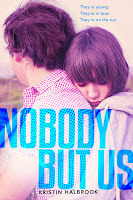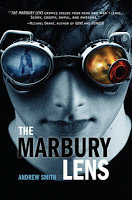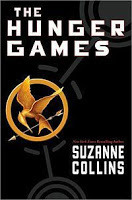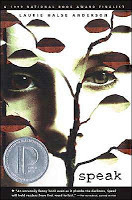Traumatizing Your Characters, Part 1: Generalities
Well, hello.
A few weeks ago, I attended the Missouri Writers Guild annual conference. I met a bunch of really enthusiastic, talented, and insightful writers and had an absolute blast. I also got to hang out with my incredible agent, which is a rare treat. Have I mentioned that I love her? I do. She deserves much credit for keeping me on the rails writing-wise ... which is not an easy task.
Anyway, one of the things I did while I was at the MWG conference was teach a master class called "The Ins and Outs of Traumatizing Your Characters." It was a ton of fun, because the people who attended were so full of input and feedback and questions and ideas--man, I love when I get to do things like that.
I've decided to share some of the information here on the blog. Over the next several posts, I'm going to give you:
some general info on traumadiscuss different types of trauma and how that impacts people's (and characters') reactionsidentify some factors that exacerbate and buffer trauma reactionsdiscuss each type of symptom in the PTSD diagnosistalk a little about treatmentoffer some general writing tipsHow does that sound? Shall we get started?
The reason I chose to offer a master class on trauma is that it's prime fiction material. So many novels deal with traumatizing events or how characters cope with the aftermath of trauma. It's riveting. Authors manage it in MANY different ways.
 Nobody But Us by Kristin Halbrook is a heartbreaking story of two traumatized characters trying to find their way together. This book will be featured in my post about developmental trauma--including a brief interview with the author herself!
Nobody But Us by Kristin Halbrook is a heartbreaking story of two traumatized characters trying to find their way together. This book will be featured in my post about developmental trauma--including a brief interview with the author herself!
 It could be argued that The Marbury Lens by Andrew Smith is one giant trauma reaction experienced by an already vulnerable character, but there's no "telling" here--it's all "show", which leaves you to figure it out for yourself.
It could be argued that The Marbury Lens by Andrew Smith is one giant trauma reaction experienced by an already vulnerable character, but there's no "telling" here--it's all "show", which leaves you to figure it out for yourself.
 The Hunger Games series by Suzanne Collins depicts the trauma reactions and ongoing traumatization of several of its main characters--in a dystopian setting.
The Hunger Games series by Suzanne Collins depicts the trauma reactions and ongoing traumatization of several of its main characters--in a dystopian setting.
 Speak by Laurie Halse Anderson is a beautifully done and realistic narrative of recovery from the trauma of rape. Trauma in fiction is relevant and resonant when done well. Here's why:
Speak by Laurie Halse Anderson is a beautifully done and realistic narrative of recovery from the trauma of rape. Trauma in fiction is relevant and resonant when done well. Here's why:
25-40% of youth will experience at least one potentially traumatizing event by age 16 Up to 60% of the US population is exposed to at least one traumatic event in their lifetimesPTSD affects more than TEN MILLION American children and adults--lifetime PTSD prevalence is 8% in the US.Women are twice as likely to develop PTSD. That may be due in part to men not being as willing to disclose for reasons having to do with our cultural and social roles and expectations, but the increased risk for women is also likely due to the fact that women are more likely to experience intimate/interpersonal trauma--we'll discuss why this is relevant in the next post!Lifetime prevalence might be 8%, but in military populations, it’s 14-15% ... for obvious reasons, I think.One thing you might notice from the above statistics--most people exposed to a traumatic event won’t develop PTSD or need treatment. We'll talk about why that is a few posts hence.
SO! Those are a few generalities. Are you writing characters going through trauma or dealing with its aftermath? What questions do you have? I've planned several posts for this series, but I may extend it to specific questions if folks are interested.
A few weeks ago, I attended the Missouri Writers Guild annual conference. I met a bunch of really enthusiastic, talented, and insightful writers and had an absolute blast. I also got to hang out with my incredible agent, which is a rare treat. Have I mentioned that I love her? I do. She deserves much credit for keeping me on the rails writing-wise ... which is not an easy task.
Anyway, one of the things I did while I was at the MWG conference was teach a master class called "The Ins and Outs of Traumatizing Your Characters." It was a ton of fun, because the people who attended were so full of input and feedback and questions and ideas--man, I love when I get to do things like that.
I've decided to share some of the information here on the blog. Over the next several posts, I'm going to give you:
some general info on traumadiscuss different types of trauma and how that impacts people's (and characters') reactionsidentify some factors that exacerbate and buffer trauma reactionsdiscuss each type of symptom in the PTSD diagnosistalk a little about treatmentoffer some general writing tipsHow does that sound? Shall we get started?
The reason I chose to offer a master class on trauma is that it's prime fiction material. So many novels deal with traumatizing events or how characters cope with the aftermath of trauma. It's riveting. Authors manage it in MANY different ways.
 Nobody But Us by Kristin Halbrook is a heartbreaking story of two traumatized characters trying to find their way together. This book will be featured in my post about developmental trauma--including a brief interview with the author herself!
Nobody But Us by Kristin Halbrook is a heartbreaking story of two traumatized characters trying to find their way together. This book will be featured in my post about developmental trauma--including a brief interview with the author herself! It could be argued that The Marbury Lens by Andrew Smith is one giant trauma reaction experienced by an already vulnerable character, but there's no "telling" here--it's all "show", which leaves you to figure it out for yourself.
It could be argued that The Marbury Lens by Andrew Smith is one giant trauma reaction experienced by an already vulnerable character, but there's no "telling" here--it's all "show", which leaves you to figure it out for yourself.  The Hunger Games series by Suzanne Collins depicts the trauma reactions and ongoing traumatization of several of its main characters--in a dystopian setting.
The Hunger Games series by Suzanne Collins depicts the trauma reactions and ongoing traumatization of several of its main characters--in a dystopian setting.  Speak by Laurie Halse Anderson is a beautifully done and realistic narrative of recovery from the trauma of rape. Trauma in fiction is relevant and resonant when done well. Here's why:
Speak by Laurie Halse Anderson is a beautifully done and realistic narrative of recovery from the trauma of rape. Trauma in fiction is relevant and resonant when done well. Here's why:25-40% of youth will experience at least one potentially traumatizing event by age 16 Up to 60% of the US population is exposed to at least one traumatic event in their lifetimesPTSD affects more than TEN MILLION American children and adults--lifetime PTSD prevalence is 8% in the US.Women are twice as likely to develop PTSD. That may be due in part to men not being as willing to disclose for reasons having to do with our cultural and social roles and expectations, but the increased risk for women is also likely due to the fact that women are more likely to experience intimate/interpersonal trauma--we'll discuss why this is relevant in the next post!Lifetime prevalence might be 8%, but in military populations, it’s 14-15% ... for obvious reasons, I think.One thing you might notice from the above statistics--most people exposed to a traumatic event won’t develop PTSD or need treatment. We'll talk about why that is a few posts hence.
SO! Those are a few generalities. Are you writing characters going through trauma or dealing with its aftermath? What questions do you have? I've planned several posts for this series, but I may extend it to specific questions if folks are interested.
Published on May 15, 2013 03:00
No comments have been added yet.



